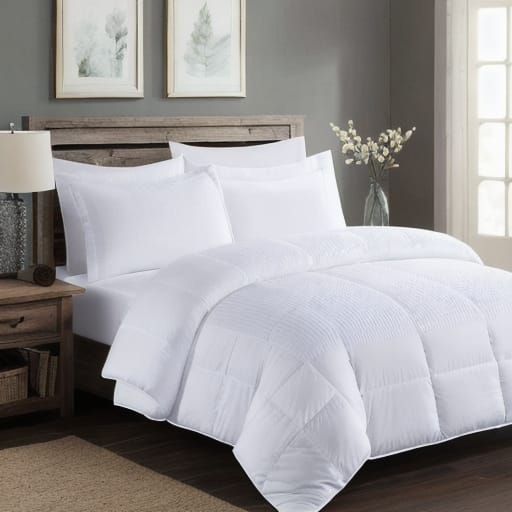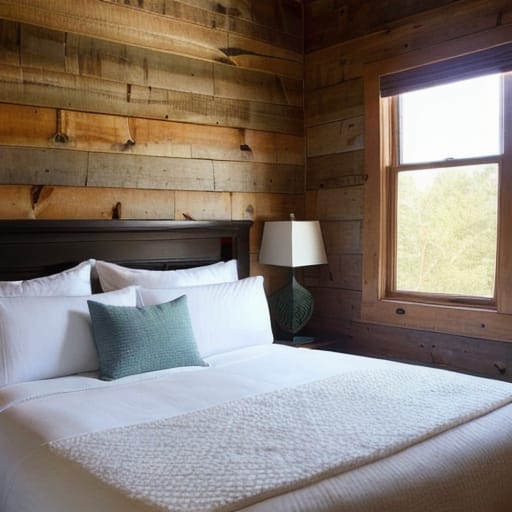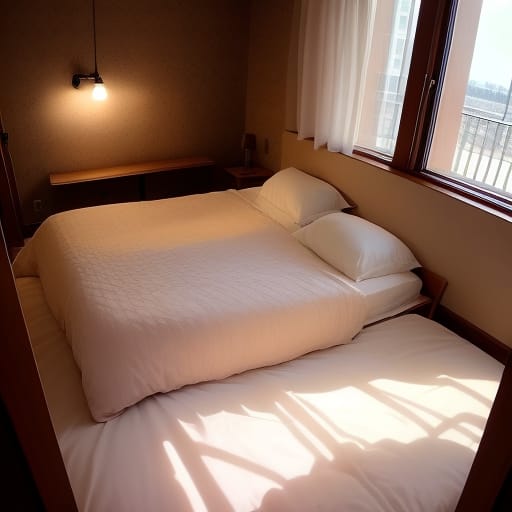Have you ever wondered why your down comforter makes crinkling or rustling noises when you move around in bed? If so, you’re not alone. Many people are puzzled when their cozy-down comforters start sounding like a bag of potato chips at night.
The short answer is that the structure and materials used to make down comforters can cause noise with movement. But there are some design factors that make certain down comforters noisier than others. This beginner’s guide will explain the reasons behind the sounds, how to choose a quieter comforter, and tips for muffling the noise so you can sleep undisturbed.
What Causes the Noise in Down Comforters?
Down comforters are filled with the soft, fluffy clusters of duck or goose down. This superior filling is what gives down comforters their lightweight warmth and dreamy softness. But when the filling shifts inside the outer fabric shell, it causes rustling noises.
There are a few key reasons why the filling moves around:
- You move around – Any time you roll over or change positions in bed, it disturbs the down filling and causes it to crinkle while it settles.
- The filling clumps – Down filling has a tendency to clump up into light, airy balls inside the comforter. These can make noise when they rub against each other or the fabric.
- The fabric is lightweight – Lightweight outer fabrics with a loose weave will make more noise than heavier, tighter woven fabrics.
So in basic terms, noise happens because low-density down filling shifts around inside a lightweight, breathable shell fabric each time you move.
What Design Factors Impact Noise Levels?
While some amount of noise is inevitable with down bedding, some comforters definitely tend to be noisier than others. Here are the key design factors that impact how much audible rustling you’ll hear:
1. Fill Power
The fill power indicates the fluffiness and quality of the down fill. It ranges from about 300 to 900. The higher the number, the better quality, lighter, and more insulating the down is.
But higher fill powers lead to more air pockets between the down clusters, which increases filling movement. So higher fill power = more noise potential.
2. Construction
How the outer shell fabric is attached to the filling impacts noise levels:
- Sewn-through: The top and bottom layers of fabric are stitched together, creating separate baffle boxes to hold filling. This allows the most filling movement and noise.
- Baffle box: Walls of fabric between top and bottom layers limit filling movement between boxes for less noise. More baffles = less noise.
3. Fabric
Airy downproof fabrics designed to contain feathers will be noisier than more dense materials like sateen cotton which helps mute sound. Some high-end comforters even use special sound-buffering fabrics to limit noise.
4. Stitch Quality
Poor stitching that leaves gaps in seams or baffle walls allows more filling movement between compartments. This leads to extra noise potential. High stitch density and tight seams reduce noise.
How to Shop for a Quieter Down Comforter
Now that you know why down comforters make noise and what traits make some noisier than others, here is what to look for to choose one that will keep peaceful silence in your bedroom:
- Quality materials – Splurge on high fill power down and tightly woven outer fabrics rather than budget options which skimp on materials to cut costs.
- Baffle box design – More filled compartments limit inner filling movement for less noise. Look for at least 10 interior baffle boxes but ideally more.
- Heavier weight – Go for comforters advertised as “extra warmth” or winter-weight. The additional insulation helps muffle noise compared to lightweight summer comforters.
- Sound-reducing features – Some premium comforters add special outer fabrics or inner liners designed to buffer noise.

8 Tips to Make a Noisy Down Comforter Quieter
Sometimes even high quality down comforters make some crinkling noises. But there are a few handy tricks you can try to muffle the sounds so you don’t lose sleep:
- Fluff it frequently – Fluffing and reshaping keeps the filling evenly distributed.
- Air it out – Occasionally hang outside so air pockets relax.
- Use a duvet – Adding a protective cover helps dampen noise.
- Try dryer balls – Wool or rubber balls can soften filling clumps.
- Spray down – Use a delicate spray bottle with water to lightly moisten filling.
- Tumble dry low – Helps loosen clustered filling after washing.
- Cover with blanket – An extra layer further muffles any sounds.
- Background noise – Consider a white noise app, fan, or sound machine to mask it.
With a little troubleshooting, you can get even noisier down comforters to keep it down at night.
5 Top-Rated Quiet Down Comforters
If you’re in the market for a new down comforter, start your search here. Based on extensive tester feedback from publications like Good Housekeeping, Wirecutter, and CNN Underscored, these options rise above the rest for combining dreamy warmth, plush comfort and blissfully silent sleep:
1. Legends Hotel Alberta Down Comforter
- 650+ fill power white goose down
- Soft, 350 thread count cotton cover
- Multiple internal baffle boxes
- “So silent I sometimes wonder if it’s still on the bed.” – Windsor Peak Press
2. The Company Store LaCrosse Down Comforter
- 700 fill power down
- Lightweight but substantial feel
- Unique box baffle design
- “One of the quieter down comforters tested.” – Insider
3. Royal Hotel’s Down Comforter
- 300 thread count cotton sateen fabric
- Double-needle stitching reduces fill shifting
- Available in all-season warmth ratings
- “No crinkling or rustling noises.” – Well-Trained Mind
4. Pacific Coast Feather Cloud Down Comforter
- 550 fill power European down
- Improved baffle box construction
- Stays fluffy even after washing
- “Lives up to its ‘cloud’ name with silent, billowy comfort.” – Plumeria Reviews
5. Egyptian Bedding Luxury Siberian Goose Down Comforter
- Hypoallergenic 750 fill power down
- Tightly woven, 100% cotton cover
- Double stitched seams
- “Warm as toast but no crinkly foil wrapping noise.” – Guide to Sleep
While pricier than lower quality versions, investing more upfront means you’ll enjoy many years of uninterrupted, peaceful slumber. So you can bundle up in fluffy warmth and comfort without the annoying rustle keeping you up at night.

The Bottom Line
A little bit of shuffling noise may be unavoidable when you snuggle under the cloud-like coziness of a down comforter. But understanding what causes it and how to select one more likely to stay silent means you can have the best of both worlds – featherlight warmth and undisturbed sleep.
Frequently Asked Questions
What is the main reason down comforters make noise?
The lightweight, fluffy down filling shifts and rubs against the outer fabric when you move, causing rustling sounds. The filling moves into air pockets inside the baffle boxes, so more filling movement creates more noise potential.
Which construction method is quietest in down comforters?
Look for baffle box construction, where walls of fabric between the top and bottom layers compartmentalize the filling. More baffles equal less noise because the filling stays put.
How can I choose the quietest down comforter?
See if the manufacturer specifies sound-reducing properties like tightly-woven outer fabrics or internal noise buffers. In general, higher fill power down paired with higher thread count cotton shell fabrics will be quieter than budget versions.
Does wash and dry treatment reduce down comforter noise?
Yes! Occasionally drying your comforter on low heat softens filling clumps and helps filling redistribute evenly for less noise. Just use tennis balls and be sure to run an extra spin cycle or air fluff cycle afterwards.
What’s the best way to make a noisy down comforter quieter?
Small tricks like adding a duvet cover, using dryer balls while washing, lightly misting the filling, and having background noise all help dampen rustling. But the best solution is buying a premium quality comforter designed for soundless sleep in the first place.








